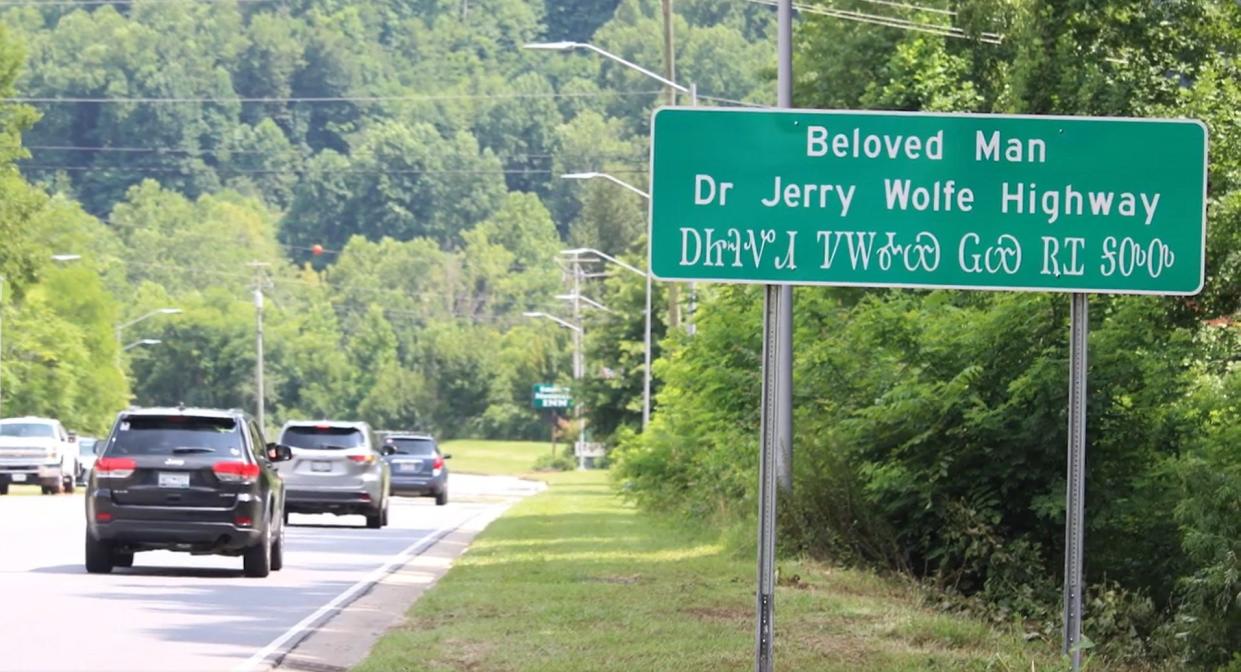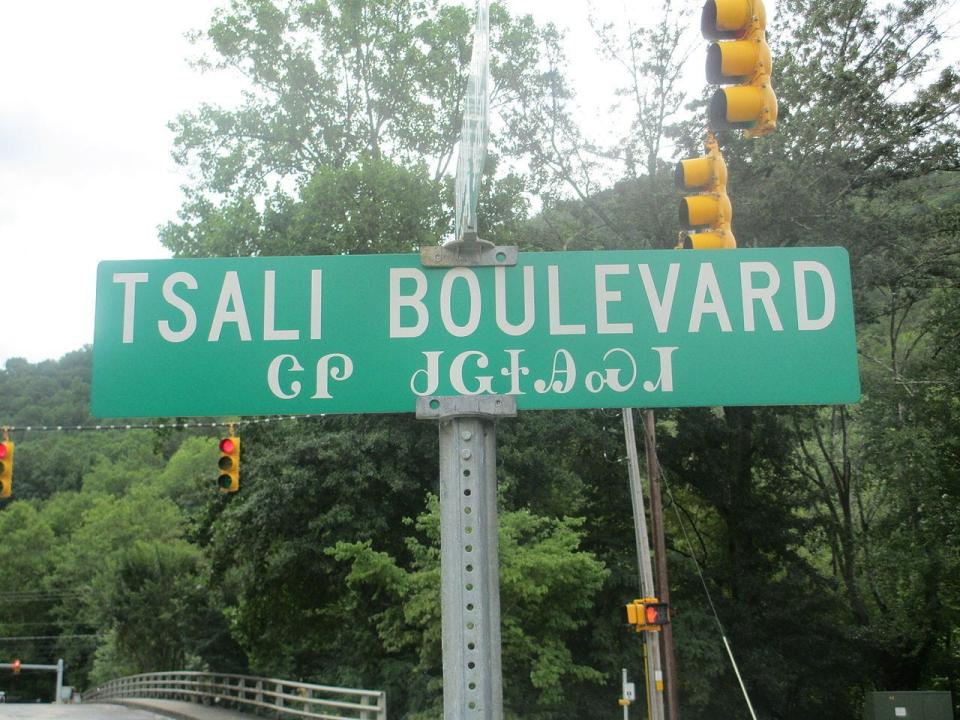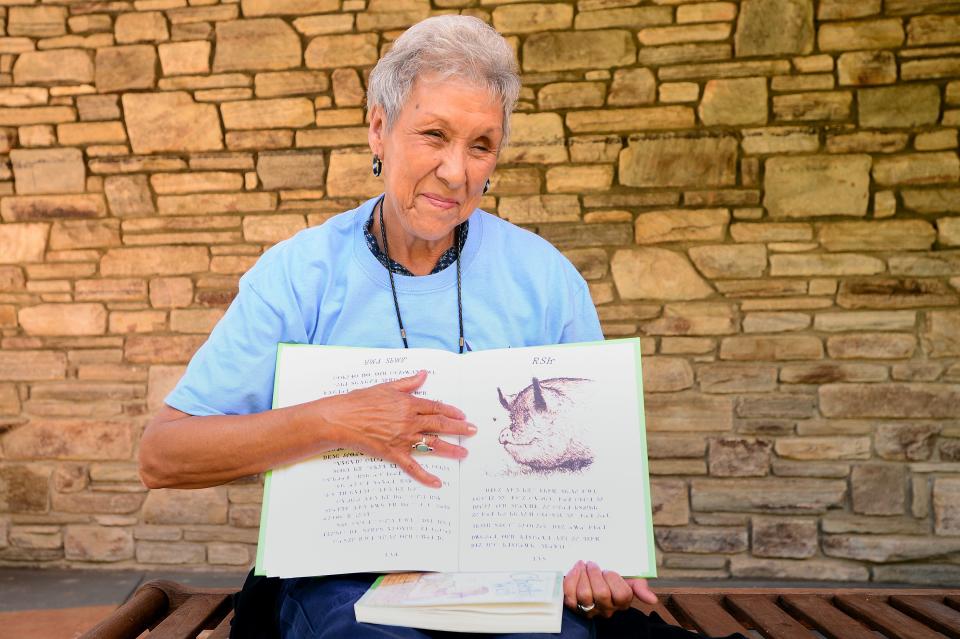Answer Man: Are there 2-language Cherokee and English road signs in the Qualla Boundary?

ASHEVILLE - Today’s question intersects two things we might not often think of going hand-in-hand: roads and language. Got a question for Answer Man or Answer Woman? Email Interim Executive Editor Karen Chávez at KChavez@citizentimes.com and your question could appear in an upcoming column.
Question: On a recent visit to my state of origin Wisconsin, I was driving on Highway 13 near Lake Superior within the boundaries of the Red Cliff band of the Ojibwa Nation. There was official road signage printed in both English and the Ojibwa language. It certainly made me aware that I was on sovereign Native American land. Is there a similar project currently in effect or in the planning for road signs within the Cherokee Nation's boundaries? From articles I have read over the years in the ACT, I am aware of how diligently the Cherokee are working at preserving and celebrating their culture. The road signage seems like a great educational tool, particularly for those of us who are not members of the indigenous first-generation people who inhabited the mountains of Western North Carolina.
More:'Cherokee, in the center': Asheville murals project paints way for an indigenous movement
More:Buncombe County votes to support changing 'Clingmans Dome' name to Cherokee 'Kuwohi'
Answer: The articles you’ve read are right.
Cherokee cultural preservation in the Qualla Boundary is a strong and ongoing force for the Eastern Band of Cherokee Indians. A big part of that is language.
According to the Cherokee Nation Language Department, there are an estimated 2,000 first language Cherokee speakers today, “with several thousand more, considered beginner or proficient speakers through the tribe’s language programs.”
Of those, most are in Oklahoma and only about 200 are part of the EBCI, according to UNC Chapel Hill research.
Cherokee is part of the Iroquoian language family and was considered severely endangered in North Carolina by The United Nations Educational, Scientific and Cultural Organization. It uses a writing system known as a syllabary, which leads to the one-word answer to this question: yes.
The Qualla Boundary — 56,000 acres of tribal land and home to many of the EBCI’s 16,000 citizens bordering Great Smoky Mountains National Park — has thousands of road signs written in both English and the Cherokee language and syllabary. Not every road sign is a dual-language, but a good many are.

While dual-language road signs are not uncommon — you can find them for example in Canada, where they combine French and English — they have a powerful significance on the Qualla Boundary.
Part of well-documented colonial efforts by the U.S. government to obliterate Cherokee culture and displace its people was by killing Cherokee language and dominating schools with religion and English-only curricula. There are still generations of Native American people who were taught it was wrong to speak and write Cherokee.
More:Tough story to tell: Chronicles of Cherokee land cessions, broken treaties in Buncombe County
More:A year after Buncombe native land project, county continues to amplify indigenous voices
Dual-language road signs play a part in pushing back against the overtly racist ideas that drove the colonial onslaught of the last few centuries.
The signs themselves have been around for decades, but a 2004 Citizen Times article recalls a significant first step in putting the signs up around the Qualla Boundary. It recounted the story of Henry Welch, a Cherokee Indian Department of Transportation employee who helped place some of the first dual-language signs.
"They told us if we spoke it, they would wash our mouths out with soap," Welch told the reporter of his childhood relationship with the Cherokee language. In April 2003, Welch helped place some of the roughly 400 signs on Cherokee streets.
Linguist Garfield Long and renowned tribal translator Myrtle Driver Johnson translated the street names from English to Cherokee. The N.C. Department of Corrections made the signs using a special computer program the tribe provided.
More:Answer Man: Downtown Asheville's $35M historic Flatiron building renovation finished?
More:Answer Woman: Why has NCDOT stopped painting highways? How are road markings maintained?

Margaret Bender is the Lam Family Endowed Faculty Fellow in Anthropology and associate professor of snthropology and linguistics at Wake Forest University and author of "Signs of Cherokee Culture: Sequoyah's Syllabary in Eastern Cherokee Life." She told the Citizen Times Jan. 31 that the dual-language signs continue to help education and cultural revitalization.
Related:Eastern Band of Cherokee council OKs NC legislature talks on medical marijuana market
"When the signs first went up, not many people were using them to find locations in that way we typically use street signs. But the signs going up was part of a big language and cultural revitalization," Bender said.
"They've actually become very linguistically useful because there are so many kid,s but also adult second-language learners who are working on their Cherokee using the syllabary. You now can have the Cherokee syllabary on an iPhone on an iPad, pretty much any digital device. And so the opportunity to sort of practice and be reinforced in using the writing system every day, everywhere you go, I think has become much more practically useful, although it was always culturally meaningful from the start."
Those interested in learning more about Cherokee education efforts and resources in WNC can visit ᏏᏲ! Kituwah Preservation and Education Program at ebcikpep.com.
Andrew Jones is an investigative reporter for the Asheville Citizen Times, part of the USA TODAY Network. Reach him at @arjonesreports on Facebook and Twitter, 828-226-6203 or arjones@citizentimes.com. Please help support this type of journalism with a subscription to the Citizen Times.
This article originally appeared on Asheville Citizen Times: Dual-language Cherokee, English signs in Qualla Boundary?

